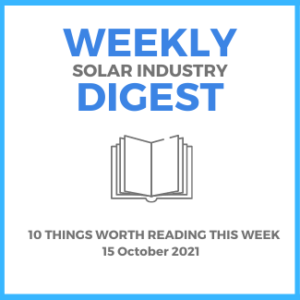New pledges of climate finance from wealthy nations in the southern parts of the globe is good news, but the existing system for accessing that financing is rife with complex and varying funder requirements, lengthy project development timelines, and new requirements for data collection and reporting that hold back the flow of that financing for developing nations.
S-5 shares the lowdown on why EPDM and butyl tape sealants are the best way to go for preventing leakage and water intrusion into an exposed-fastened roof. They discuss the key features for the two sealants, how to expand the lifespan of them both, and best placement when mounting attachments.
EnergySage ranked the 2021 panel warrantees on the market. They considered the key characteristics: terms, power guarantees, labor warranty term, transferability & bankability, and availability of getting an extended one. They ranked SunPower as strongest overall warranty, and put Panasonic and LG Solar as close seconds and REC and Silfab coming up third and fourth.
A FERC decision regarding SEEM (lobbied by the area utilities) has solidified a lack of competition in the Southeast renewables market – the regional competitive electricity wholesale market will continue to function wed to the vertically integrated utilities. The ruling also means that there will be no commission direction about how this new SEEM would be implemented.
A new IEA report states that investment in renewable energy has to triple by 2030 if the world can hope to actually fight climate change and keep changeable energy markets under control. Right now there is not enough global investment to meet future energy needs, particuarly around policies related to transition-related spending.
Aurora content curated a series of articles on recruiting the best talent for your business. They include articles on the role of diversity and the current state of the market around hiring minorities, the HBCU Talent Exchange tool for hiring talent free of bias, and trends in solar job creation from the recent solar job censuses.
The proposed DOE loan program for 2022 is shifting to make it so that federal funding no longer directly subsidizes fossil fuels. The plan is to remove the $8.5 billion of the total $44 billion in available funding that goes to traditional fossil fuel projects. Instead it would encourage projects that help achieve carbon-emission-free electricity by 2035 and net-zero emissions across the economy by 2050.
NREL’s research has found a new technique – at the atomic level – for identifying silicon solar cell defects that impact efficiency. The findings could help panel manufacturers predict issues and strengthen products against light-induced degradation (LID) which causes a 2% drop in power output over the life of the deployed tech.
The Biden administration set a target of powering 5 million homes with community solar projects in less than 4 years – something that would require 700% growth of current capacity. Though the cumulative installed capacity of community solar has grown quickly over the past decade, this kind of exponential growth would require serious policy initiatives.
Solar Builder and BayWa.re have rolled out a three part video series to cover pressing issues in the market. In the first part two product experts from Baywa.re discussed developments on the energy storage product front, the state of panel recycling and the latest developments in market policy.
